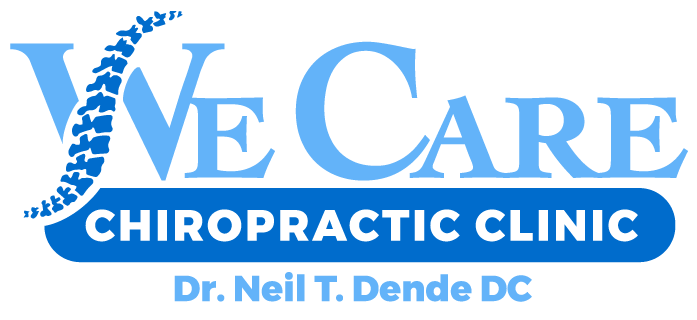Understanding Whiplash
WE CARE CHIROPRACTIC
24/7 Emergency Auto Injury Appointments In Glendale, AZ
If you’re searching for “what is whiplash” or “how to treat whiplash” this post will give you a better understanding of both. Often times a neck strain is referred to as whiplash. Even though it is normally associated with a car accident, any blow or impact that can cause your head to jerk backwards or forward can cause whiplash. This sudden force will stretch and tear the tendons and muscles within your neck.
A neck strain will often affect professional and amateur athletes. Those who play in contact sports such as football are very much prone to a neck strain.
A neck strain can often be confused with a neck sprain. They are actually different. A neck strain will be caused by damage to the tendons, or muscle, bands of tissue that connect the bones to the muscle. A neck sprain is caused by ligaments tearing which are tissues that connect bones to each other.
There are differences between a sprain and a strain which will not mean much to you. The symptoms, causes and the treatment of a neck sprain and a neck strain are very similar.
Symptoms of Whiplash
Whiplash pain is hard to ignore. The symptoms can include:
- Headaches that are located at the skull base that go towards your forehead.
- Tenderness
- Stiffness or pain when moving your head to look over your shoulder.
- Pain when moving your head from back to front or side to side.
- Range of motion is decreased, tightness in your neck, and pain. The muscles can feel knotted or hard.
There are times where the neck strain pain is immediate and then in other cases it could take hours or even days before you neck starts to hurt.
The blow that will cause a neck strain can often cause a concussion as well. Concussions can be very serious, and you will need to see a doctor right away. You will need to have emergency care if you have a headache that is getting worse or it is continuous, if you have trouble talking or weakness, or if you are nauseous, unconscious, excessively sleepy, dizzy or confused.
In order to diagnose a neck strain, a doctor will examine you thoroughly. You may also have a CT scan, x-rays, or other types of tests to rule out any other problem.
Treatment for Whiplash
There is some good news: with a bit of time, whiplash will heal on its own. To help with recovery, you can:
- Apply moist heat only after icing for 3 days. You can use heat on your neck after the swelling has went down. You can take a warm bath or use a warm, wet towel.
- Ice the neck in order to reduce swelling and pain as soon as possible after the injury. Do this for 15 minutes every 4 hours for 3 days. Wrap the ice in a thin cloth or towel to prevent skin injury.
- Take prescription medications or other medications if recommended by your doctor. NSAIDs such as Motrin, Advil, ibuprofen or even Aleve or Naproxen can help with swelling and pain. Just remember that medicines will have side effects. Do not use them on a regular basis unless directed by your doctor. Check with your doctor before you take them with any other medications or if you have medical issues. If an over-the-counter medication does not work, then muscle relaxants and prescription painkillers may be needed.
- Use a neck collar or brace in order to provide support if it is recommended by the doctor. However, they are not meant to be used for long term because they can weaken muscles in the neck.
- Other treatments such as massage and ultrasounds can help.
When will the whiplash feel better?
The recovery time will be based on how serious the whiplash is. Many cases will resolve itself in a few days. Other neck strains can take weeks or months to fully heal. Just keep in mind that everyone will heal at a different rate.
Once all the minor symptoms of the neck strain have been relieved, your doctor may want to begin rehab treatments. This will help you to be more limber and strengthen neck muscles. It can also help you to reduce other chances of neck strains and help you to recover.
You may begin with gently stretching your neck that will get more vigorous as you heal. Do not start exercising until you talk to your doctor.
Whatever you decide to do, do not rush anything. People who play in a contact sport will need to be really careful that they are healed before playing the sport again. The doctor will give the okay for you to go back to regular activity when you are ready. Do not try to go back to your normal activity level until you are able to:
- Rock you head from side to side without stiffness or pain
- Rock your head forward and back without stiffness or pain
- Look over your shoulders without stiffness or pain
If you begin to push yourself before you are fully healed, you may end up with permanent injury and chronic neck pain.
Preventing Whiplash
There isn’t a lot to do when it comes to whiplash prevention that can be caused by an accident. to prevent whiplash caused by an accident. However, there are a few things to do to help reduce the risk of it:
If you work in the same position all day, such as an office worker, take regular breaks to exercise your neck and stretch.
Practice neck exercises that help to increase strength and to keep your muscles limber and strong, especially if you were diagnosed with a prior case of whiplash.
Professional Whiplash Treatments
If these tips haven’t resolved your pain, or if you’d just feel better having a professional look at your whiplash and neck We Care Chiropractic is Glendale Arizona’s source for whiplash treatments. Our team offers both chiropractic treatments for whiplash but also massage treatment. With a combined care approach we help the residents of Arizona get back to feeling better and get past their whiplash symptoms more quickly. For more information or to schedule whiplash treatment in Glendale AZ please call 623-825-4444.
AT WE CARE CHIROPRACTIC, WE GOT YOUR BACK!

